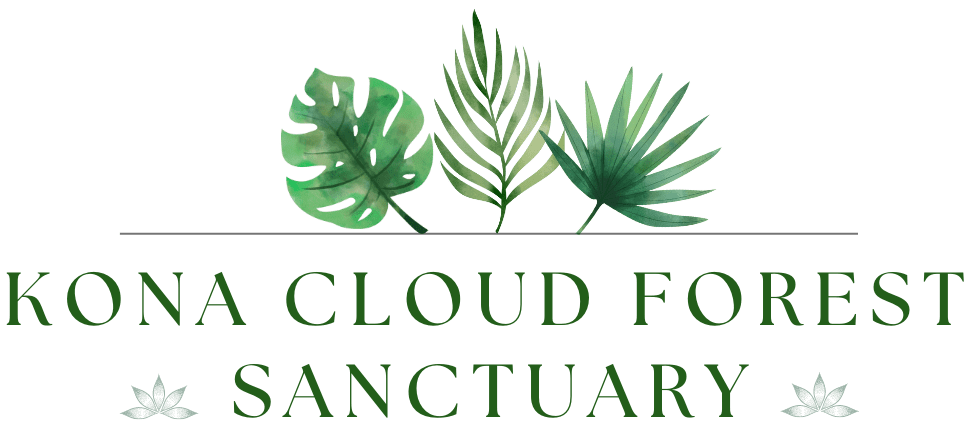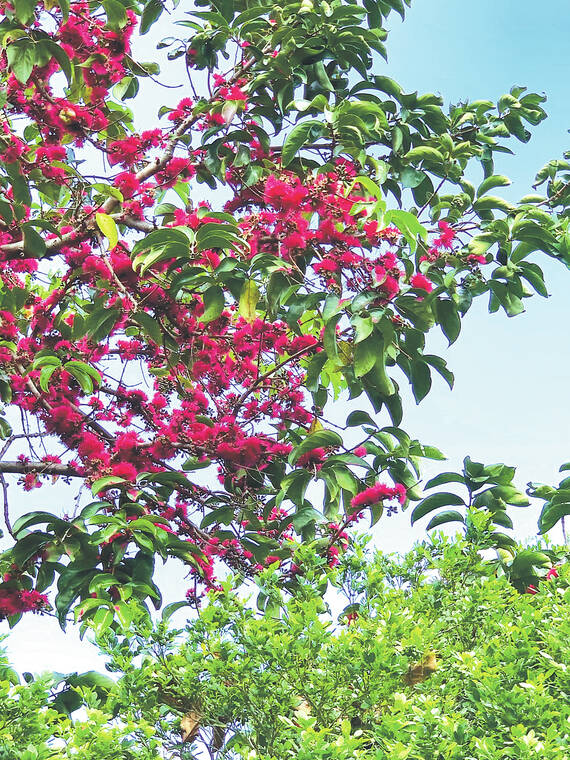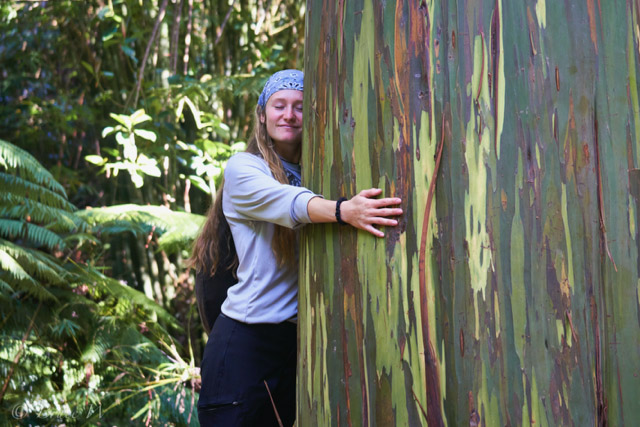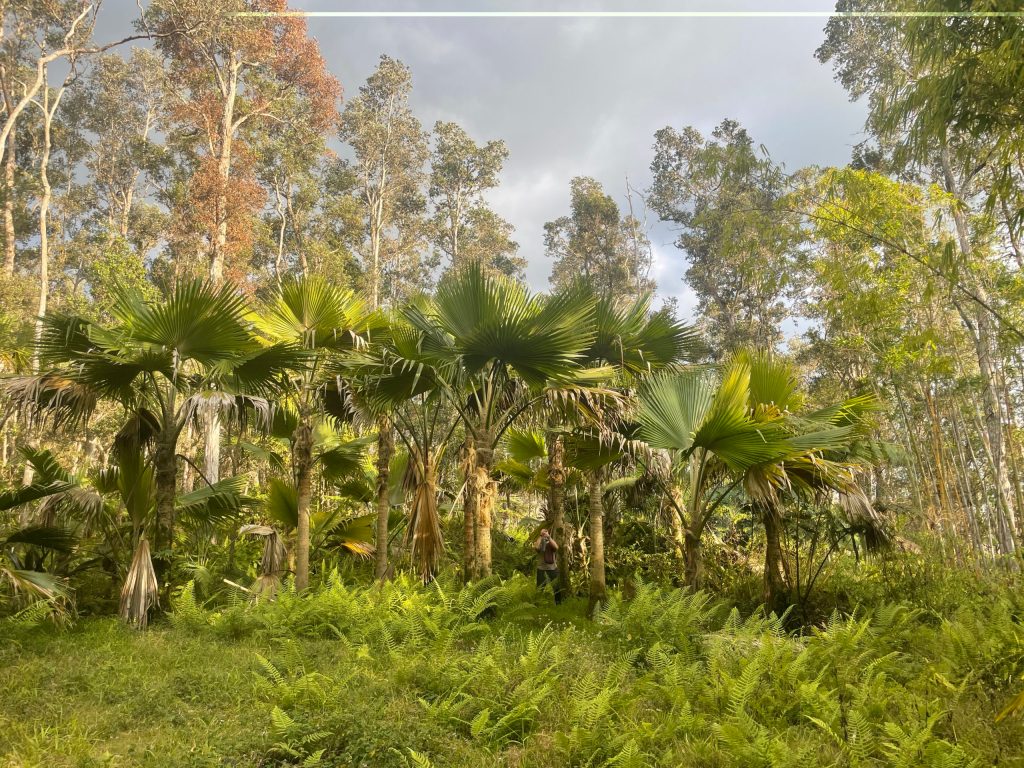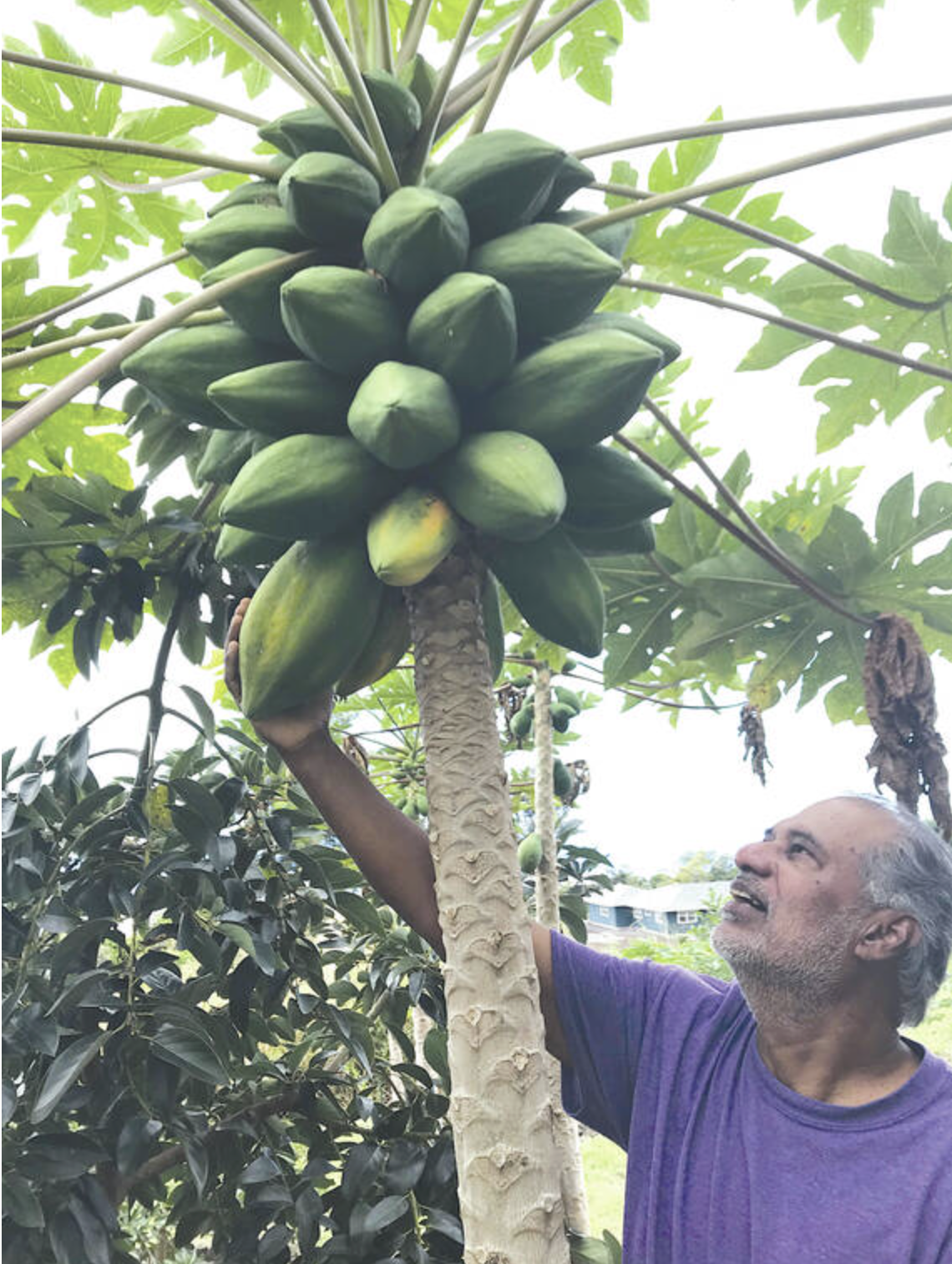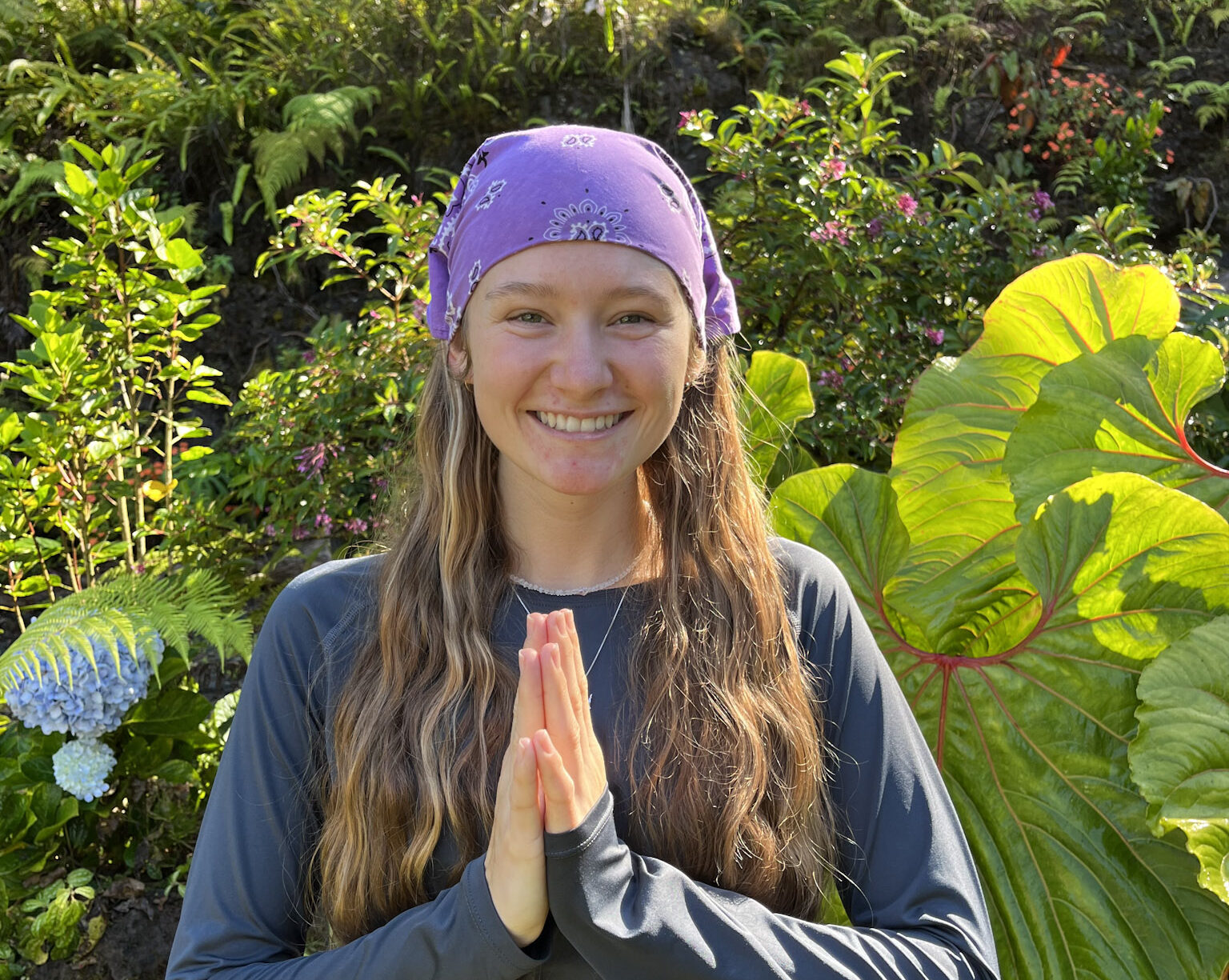f you are looking for tough, resilient and useful plants to develop a new landscape or enhance an established one, consider the first introductions by the Polynesians. Then look forward to other introductions by each culture and ethnic group to make our islands their home.
Of course endemic plants should be on your list, but some are extremely site specific. They often evolved to adapt to certain microclimates and are difficult to grow outside their comfort zone. An example would be the family of Lobelias of which we have about one hundred species. Other examples are the silversword plants that do well at elevations of 6,000 to 12,000 feet on Hawaii and Maui. They are not happy in low, warm or wet zones.
Indigenous plants are those that are natives but found in many other tropical regions of the Pacific like beach naupaka. This plant is common along the coast, but may be grown inland as well. A close relative, the mountain naupaka evolved here but is not as easy to grow. A surprising group of plants to consider are those that were bred to be houseplants like philodendron, bromeliads, spathiphyllum and dracaena that will tolerate a variety of conditions.
When the first Polynesian arrived in the Hawaiian Islands, there were no coconut palms here. There were no mountain apple, breadfruit, kalo and many other plants we think of as Hawaiian. If you think that kukui, bananas, and ti are natives and seem to grow easily, then it is time to rethink! These plants are alien, nonnative species brought to Hawaii by the Polynesians as they migrated across Southeast Asia and the Pacific Ocean. These are referred to as canoe plants. They were important to the survival, especially when Polynesians explored new islands and found those like Hawaii lacked the variety of fruits and medicinal plants they needed.
For example, our state tree, the kukui, originated in what is now Indonesia, it is believed. Our state tree probably should be the loulu palm because it is endemic — that is, it found only in Hawaii. Of course there are exceptions to this. Four species of the genus are found in the South Pacific. Two species were only recently discovered. The Hawaiian loulu actually evolved here and are found growing naturally only in Hawaii. At one time, there may have been many dozens of species, but with the introduction of the Polynesian rat and pig, many must have perished. Later introduction of grazing animals did further damage.
Pritchardia maideniana is rarely found in the wild and only occasionally in the landscape. The most common types are the two introduced species from the south Pacific. These are Pritchardia thurstonii and Pritchardia pacifica. Thurston’s loulu is noted for flower clusters up to six feet long. Pritchardia pacifica has very large leaves that were used in the old days as sunshades and umbrellas. These species are adapted to dry coastal locations. The Kona loulu prefers sunny dryer locations but has been grown at elevations as high as 3,000 feet. The other rare one is named after George Schattauer, Kona kamaaina. A few trees are found above Kaohe, Honomalino and Hookena. This species and Pritchardia beccariana from Kulani Prison Road near Volcano are being distributed on the Big Island. The latter is a spectacular rainforest palm with leaves almost six feet across. It prefers moist locations with wind protection. Many species have been tested at Kona Cloud Forest Sanctuary in Kaloko Mauka, North Kona and at Amy Greenwell Ethnobotanical Garden in South Kona.
When it comes to the canoe plants, many are tough and easy to grow.
It’s important to the survival of many of these beautiful species to use them in our gardens. The hala tree, or pandanus, is a good example as is the noni, Morinda citrifolia. Both will tolerate dry, windy and salty conditions. The mountain apple, Syzygium malaccense also called ohia ai, is not often seen in modern gardens, but around old home sites in wetter parts of the islands, and it can be found growing wild. The cerise, pompom-like flowers appear on the branches and trunk. The fruit is about the size of a medium tomato, and is bell-shaped. It has a thin deep crimson skin with crisp white flesh and one seed. The seed is easy to grow and becomes a small tree you may then plant in your garden. Given many years the tree can become large but is easy to prune and kept small. There is also a variety that has white flowers and fruit, but is rare because it seldom produces a seed. It must be grafted on the common form.
Remember, if folks begin to show more interest in native trees and Polynesian introductions, our nurseries can then afford to carry them as part of their regular stock. County and state buildings and roadways are ideal for them since most do not have aggressive root systems. With the Queen Kaahumanu Highway widening project, wouldn’t it be great to see the median strip landscaped with native loulu palms, kamani, naupaka and other native and canoe species? These canoe plants and many native plants should be used instead of grass that requires much more maintenance and water.
